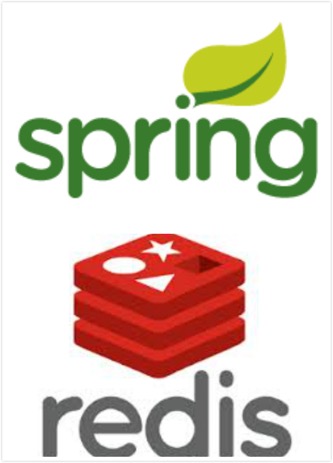
Redis相信大家都听说过,它是一个开源的key-value缓存数据库,有很多Java的客户端支持,比较有名的有Jedis,JRedis等(见这里)。当然我们可以使用客户端的原生代码实现redis的操作,但实际上在spring中就已经集成了这些客户端的使用,下面我们就以Jedis为例来介绍一下Spring中关于Redis的配置。
下载相关依赖包
首先要下载spring和redis相关的依赖包,最新的jedis版本是2.6.2,还需要下载jackson的包,这个后面会介绍为什么需要,以gradle脚本示例如下。
build.gradle1
2
3
4
5
6
7
| compile("redis.clients:jedis:" + jedisVersion)
compile "org.springframework.data:spring-data-redis:" + springDataRedisVersion
//json
compile "com.fasterxml.jackson.core:jackson-databind:" + jacksonDatabindVersion
compile "org.codehaus.jackson:jackson-mapper-asl:" + jacksonVersion
compile "org.codehaus.jackson:jackson-core-asl:" + jacksonVersion
|
spring配置jedis
在spring的xml配置文件中,做如下配置。
1
2
3
4
5
6
7
8
9
10
11
12
13
14
15
16
17
18
19
20
21
22
23
|
<bean id="jedisPoolConfig" class="redis.clients.jedis.JedisPoolConfig">
<property name="maxTotal" value="${redis.maxTotal}"/>
<property name="maxIdle" value="${redis.maxIdle}"/>
<property name="maxWaitMillis" value="${redis.maxWaitMillis}"/>
<property name="testOnBorrow" value="${redis.testOnBorrow}"/>
</bean>
<bean id="jedisFactory" class="org.springframework.data.redis.connection.jedis.JedisConnectionFactory">
<property name="hostName" value="${redis.host}"/>
<property name="port" value="${redis.port}"/>
<property name="usePool" value="true"/>
<property name="poolConfig" ref="jedisPoolConfig"/>
</bean>
<bean id="redisTemplate" class="org.springframework.data.redis.core.RedisTemplate">
<property name="connectionFactory" ref="jedisFactory"/>
<property name="defaultSerializer">
<bean class="org.springframework.data.redis.serializer.StringRedisSerializer"/>
</property>
</bean>
|
序列化
在spring中进行redis存储,如果没有对key和value进行序列化,保存到redis中会出现乱码。注意看上面的redis模板配置,有个配置项是defaultSerializer,这里表示redis中的key和value遇到需要序列化的时候,都默认使用StringRedisSerializer这个类来进行序列化。如果不指定序列化的话,内容会带乱码。
spring-data-redis的序列化类有下面这几个:
- GenericToStringSerializer: 可以将任何对象泛化为字符串并序列化
- Jackson2JsonRedisSerializer: 跟JacksonJsonRedisSerializer实际上是一样的
- JacksonJsonRedisSerializer: 序列化object对象为json字符串
- JdkSerializationRedisSerializer: 序列化java对象
- StringRedisSerializer: 简单的字符串序列化
一般如果key-value都是string的话,使用StringRedisSerializer就可以了,如果需要保存对象为json的话推荐使用JacksonJsonRedisSerializer,它不仅可以将对象序列化,还可以将对象转换为json字符串并保存到redis中,但需要和jackson配合一起使用。
简单的redis操作
代码示例如下,使用redis进行set和get操作。
MyUserRepository.java1
2
3
4
5
6
7
8
9
10
11
12
13
14
15
16
17
18
19
20
21
22
23
24
25
26
27
28
29
30
31
32
33
34
35
36
37
38
39
40
41
42
43
44
45
46
47
48
49
50
51
| @Repository
public class MyUserRepository {
@Autowired
private RedisTemplate<String, MyUser> template;
private ValueOperations<String, MyUser> operations;
@PostConstruct
public void init() {
template.setValueSerializer(new JacksonJsonRedisSerializer<>(MyUser.class));
operations = template.opsForValue();
}
public void set(String key, MyUser value) {
operations.set(key, value);
}
public MyUser get(String key) {
return operations.get(key);
}
}
public class MyUser {
private String username;
private int age;
}
@Controller
public class MainController {
@Autowired
private MyUserRepository myUserRepository;
@RequestMapping(value = "/test", method = RequestMethod.GET)
public
@ResponseBody
ResponseEntity<?> test() throws Exception {
MyUser user = new MyUser("zhaozhiming", 100);
String key = "my:user:zhaozhiming";
myUserRepository.set(key, user);
MyUser myUser = myUserRepository.get(key);
log.debug(String.format("my user:%s", myUser));
String result = mapper.writeValueAsString(user);
return new ResponseEntity<>(result, HttpStatus.OK);
}
}
|
调用set方法后,可以在日志中看到get后的MyUser对象。
1
| - my user:MyUser{age=100, username='zhaozhiming'}
|
也可以在redis里面看到保存后的json字符串了。




